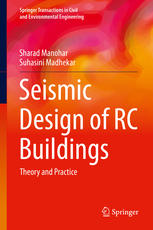

Most ebook files are in PDF format, so you can easily read them using various software such as Foxit Reader or directly on the Google Chrome browser.
Some ebook files are released by publishers in other formats such as .awz, .mobi, .epub, .fb2, etc. You may need to install specific software to read these formats on mobile/PC, such as Calibre.
Please read the tutorial at this link: https://ebookbell.com/faq
We offer FREE conversion to the popular formats you request; however, this may take some time. Therefore, right after payment, please email us, and we will try to provide the service as quickly as possible.
For some exceptional file formats or broken links (if any), please refrain from opening any disputes. Instead, email us first, and we will try to assist within a maximum of 6 hours.
EbookBell Team

4.7
86 reviewsThis book is intended to serve as a textbook for engineering courses on earthquake resistant design. The book covers important attributes for seismic design such as material properties, damping, ductility, stiffness and strength. The subject coverage commences with simple concepts and proceeds right up to nonlinear analysis and push-over method for checking building adequacy. The book also provides an insight into the design of base isolators highlighting their merits and demerits.
Apart from the theoretical approach to design of multi-storey buildings, the book highlights the care required in practical design and construction of various building components. It covers modal analysis in depth including the important missing mass method of analysis and tension shift in shear walls and beams. These have important bearing on reinforcement detailing. Detailed design and construction features are covered for earthquake resistant design of reinforced concrete as well as confined and reinforced masonry structures. The book also provides the methodology for assessment of seismic forces on basement walls and pile foundations. It provides a practical approach to design and detailing of soft storeys, short columns, vulnerable staircases and many other components. The book bridges the gap between design and construction. Plenty of worked illustrative examples are provided to aid learning. This book will be of value to upper undergraduate and graduate students taking courses on seismic design of structures.